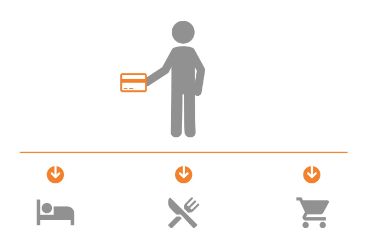The electronic patient record enjoys a new lease of life
27 October 2023 | Comment(s) |
Geneviève Aguirre-Jan

The electronic patient record (EPR) is struggling to find its place in the medical world. Therefore, the Federal Council has put forward new measures that will help to rapidly extend its use by healthcare providers and patients.
The Federal Law on the Electronic Patient Record, which came into force on 1 January 2017, aimed at making the use of the EPR mandatory in acute care hospitals, rehabilitation clinics and inpatient psychiatric services from the beginning of 2020. However, implementation in these institutions proved more difficult than expected. As for patients, few showed any interest since, by April 2023, fewer than 20,000 EPRs had been opened. On their part, cantons welcomed the EPR more or less favourably, but with varying degrees of involvement in its implementation.
These shortcomings are the consequence of a legal basis that left the implementation of the EPR nearly entirely up to the parties concerned. To remedy the situation, the Federal Council has suggested several major adjustments as part of a complete overhaul of the EPR.
EPRs: a tool for social health insurance
The Federal Council has broadened the constitutional basis by basing the Law on the Electronic Patient Record on Art. 117 of the Federal Constitution. This means that the authorities can now have a say in implementing EPRs.
Promoting the use of the EPR

The use of the EPR has been extended for it to become common practice among the actors concerned.
- For patients: it is planned to open an EPR automatically for each person insured under the LAMal/KVG, provided that the person does not object to this. If this is the case, the objection will be recorded in a register of objections managed by cantons. The insured person may reconsider his or her decision at any time.
- For health professionals: healthcare providers authorised to submit invoices to the social health insurance will be obliged to use their patients’ EPRs. Cantons will monitor this closely.
- For health insurers: health insurance companies will still not be able to access the contents of EPRs, but they will be able to record administrative documents relating to the provision of compulsory or supplemental insurance benefits, with the patient’s consent.
Contents that are continually updated
The contents of EPRs remains a collection of documents and electronic data relating to patients’ health. However, in the near future, it is planned to introduce structured documents that may be updated on an ongoing basis.
By the end of 2023, the vaccination booklet will be introduced in the EPR, followed by medication plans. Insured persons will also be able to access their data via health applications and record their own health data.
Customised data protection
Access to EPR data is defined by patients themselves. In particular, they will be able to:
- restrict healthcare providers’ access to certain data, including in emergencies
- allow or prohibit the use of data contained in the EPR for research purposes
Under no circumstances may patients be forced to make the data recorded in the EPR accessible.
A tool at the service of health
Gathering data on patient health in one single location should help the medical profession to decide which therapeutic measures are the most appropriate and to promote a “smarter medicine”, while preventing waste in the healthcare system.
In particular, it is a good idea to require those health professionals subject to social health insurance to make use of the EPR. This makes it possible to introduce the EPR to the major providers in developing patients' care pathways. On the other hand, health insurance companies should not be able to record administrative documents in the EPR, since they already have their own applications for transferring documents to their policyholders. Opening up the EPR to health insurers, as limited as it may be, can only raise concerns and questions among insured persons.
The automatic opening of an EPD for policyholders under the LAMal/KVG will allow the tool to be widely used. However, insured persons who have chosen an insurance model with a limited choice of service providers designated by the insurer, based on the most advantageous benefits, should not be able to refuse the creation of an EPR, if requested by the terms and conditions of insurance. After all, it would not be logical to choose an insurance model that offers low-cost benefits, while refusing to use a tool aimed at reducing healthcare costs.

Quality is becoming the norm, but more needs to be done
Since April 2021, insurers and healthcare providers have been signing high-quality contracts that oblige providers to deliver insured benefits of the required quality, in an efficient and cost-effective manner.
Unfortunately, over-medicalisation is still all too common and leads to unnecessary costs. Groupe Mutuel is therefore advocating for the introduction into the Swiss health system of the “Value-Based Health Care” reimbursement model, which has proved its worth in other countries.
The question of reducing the catalogue of benefits is a taboo subject that is beginning to be addressed timidly. This could be a promising way forward, but it will be very difficult to achieve because of the consensus that needs to be reached when it comes to redefining the scope of minimum healthcare coverage.
What does the future hold for the EPR?
The EPR is set to become a key tool in the healthcare sector, although there are still a number of challenges to deal with:
- user authentication and identity management
- document search and archiving
- the creation of user-friendly interfaces
Currently, some service providers are calling for the use of the EPR to be subject to additional remuneration from compulsory health insurance. If the legislator were to accept this request, it would increase healthcare costs unnecessarily, since the management of health information is already remunerated as part of medical tariffs. This demand must therefore be firmly rejected. Furthermore, the costs of setting up and running the EPR should not be passed on to premium payers. These costs must be borne by the federal and cantonal authorities.





























































